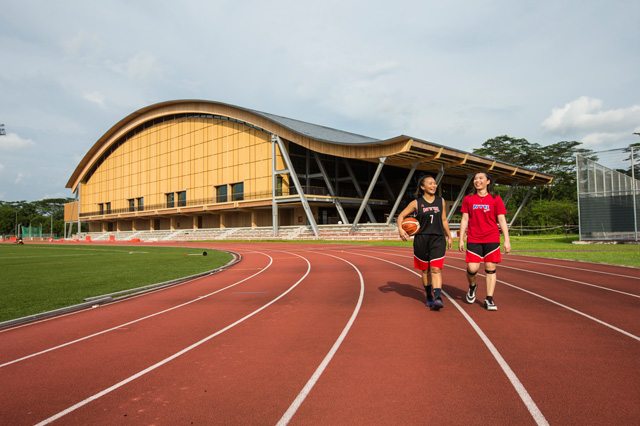The government aims to quadruple the number of construction projects with more efficient building methods by 2020, Minister for National Development said at the official opening of the new eco-friendly sports hall of Nanyang Technological University (NTU) on 24 April.

CLT and Glulam are common in Europe, but this was the first in the region the engineered wood system used on a large scale. The timber used in construction was obtained from sustainable forests in Europe, the US and Canada.
At present, only about 10 percent of construction projects use new types of technology in the building process.
Minister for National Development Lawrence Wong said at the official opening of NTU’s new sports hall, “As part of the push for sustainability, the Government aims to quadruple the number of construction projects that adopt more efficient building methods by 2020.”
“This is necessary as current methods are not sustainable for the long term. Current methods of constructing HDB flats and other buildings are labour-intensive, which would lead to a far larger pool of foreign workers than we can accommodate in Singapore.”
“This ends up becoming a bottleneck and constraint in our development. But if the Government adopts technologies like what NTU has done for its construction projects, ‘billions more’ projects can potentially be carried out with the same number of workers today,” Mr Wong said.
The building construction process involves assembling prefabricated parts, and it saved up to 40 percent in work force and 20 percent in construction time.
Occupying a land area of approximately 10,000 square metres, the three-storey building has a wavelike timber roof which provides five times better heat insulation than concrete.
The walls with two layers, also designed for heat insulation on hot days, conceal a passive induction cooling system. The walls have metal coils inside that will flow cold water through them, cooling the wind that enters the hall through convection.

In addition to enjoying an environment with natural ventilation, students can look forward to a larger space for sports and activities.


Correction note: This article has been updated to reflect information from NTU’s press release.
Subscribe
Login
0 Comments






